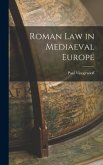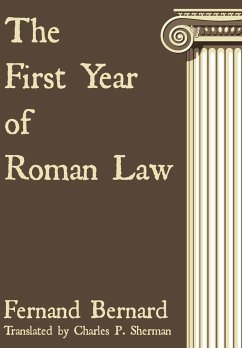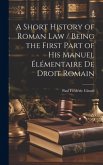Roman families were infinitely diverse, but the basis of Roman civil law was the familia, a strictly-defined group consisting of a head, paterfamilias, and his descendants in the male line. Recent work on the Roman family mainly ignores the familia, in favour of examining such matters as emotional relationships within families, the practical effects of control by a paterfamilias, and demographic factors producing families which did not fit the familia-pattern. This book investigates the interrelationship between family and familia, especially how families exploited the legal rules for their own ends, and disrupted the familia, by use of emancipation (release from patria potestas) and adoption. It also traces legal responses to the effects of demographic factors, which gave increased importance to maternal connections, and to social, such as the difficulties for ex-slaves in conforming to the familia-pattern. The familia as a legal institution remained virtually unchanged; nevertheless Roman family law underwent substantial changes, to meet the needs and desires of Roman society.
Ancient Roman families were very diverse, of course, but the basis of Roman civil law was the familia, a strictly defined group consisting of a head, called a paterfamilias, and his descendants in the male line. Recent work on the Roman family mainly ignores the familia, examining instead such matters as emotional relationships within families, the practical effects of control by a paterfamilias, and demographic factors producing families which did not fit the familia pattern. Gardner investigates the complex relationship that existed between family and familia, illustrating in particular how families exploited the legal rules for their own ends--and disrupted the familia--by use of emancipation (release from patria potestas) and adoption. She also traces legal responses to the effects of verious demographic factors, which gave increased importance to maternal connections, and to social effects, such as the troubles ex-slaves faced in conforming to the familia pattern.
Hinweis: Dieser Artikel kann nur an eine deutsche Lieferadresse ausgeliefert werden.
Ancient Roman families were very diverse, of course, but the basis of Roman civil law was the familia, a strictly defined group consisting of a head, called a paterfamilias, and his descendants in the male line. Recent work on the Roman family mainly ignores the familia, examining instead such matters as emotional relationships within families, the practical effects of control by a paterfamilias, and demographic factors producing families which did not fit the familia pattern. Gardner investigates the complex relationship that existed between family and familia, illustrating in particular how families exploited the legal rules for their own ends--and disrupted the familia--by use of emancipation (release from patria potestas) and adoption. She also traces legal responses to the effects of verious demographic factors, which gave increased importance to maternal connections, and to social effects, such as the troubles ex-slaves faced in conforming to the familia pattern.
Hinweis: Dieser Artikel kann nur an eine deutsche Lieferadresse ausgeliefert werden.








